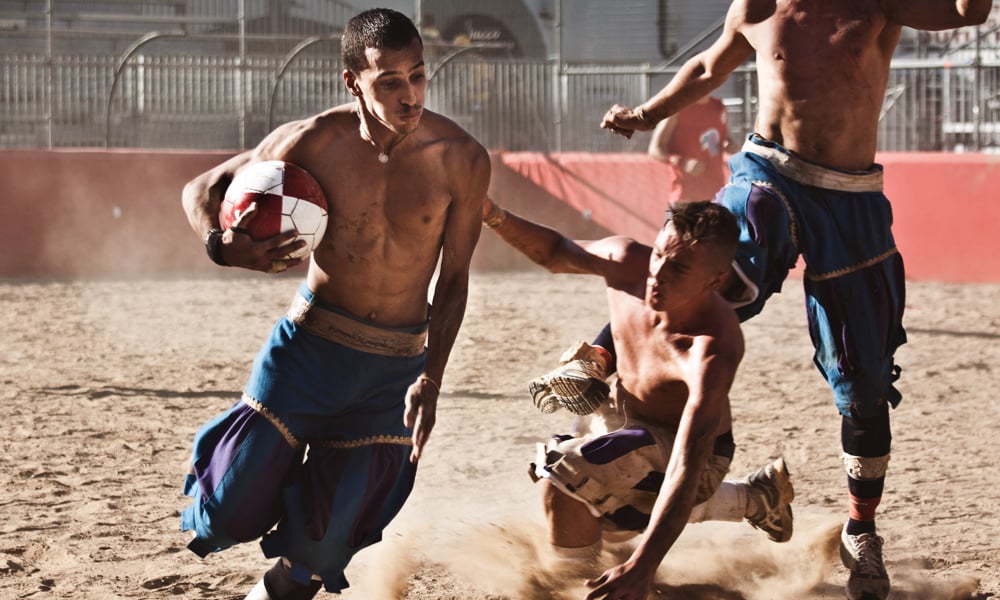Sports today are tame by history’s standards. Ancient societies didn’t seem to think twice about spending blood and lives in the pursuit of great athletic entertainment. People have been hacked, poked, drowned, punched, cut, smashed, and skied to death, all in some of history’s greatest games. The good news, depending on your viewpoint, is a few of these games are still around, in one form or another. If you know where to go, you can still see these games play out the way they would have half a millennium ago, sometimes more.
A quick note. If you’ve come here for great Roman games, we’re sorry to disappoint, but we figured everyone knew about those. Putting them on this list would just be wasting your time. We went looking for games outside the Coliseum, since those were the ones most people probably don’t know about. And in our research, we found Romans actually lacked creativity. Historical games can get super weird. Here are history’s most dangerous games.
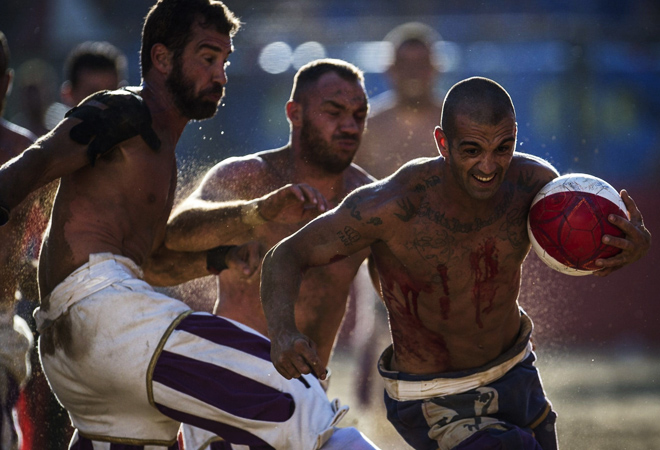
Calcio Storico
Calcio Storico is the sport that inspired us to write this feature. Ever since we first posted about it, it’s been bouncing around in our heads. We needed to know more about it and find other sports with the same sort of cultural roots.
For most of the players, it seems like their motivation for playing is to honor Florentine tradition, as well as test their own personal limits. And test them they will, because in terms of rules, there aren’t many. They were established in 1580 and haven’t changed much. You can’t sucker punch or kick anyone in the head. Otherwise, you can punch, headbutt, trip, wrestle and choke your way across the field.
Players do seem adamant that Calcio Storico isn’t a sport, it’s a game. They might distinguish between the two by saying there isn’t really a season for the game. Players can only participate in a max of two games a year, so you don’t really have the multi-month processes of seasonal sports. Instead, you get a massive, energetic display of violence and tradition that pits the four quarters of Florence, Italy, against each other.
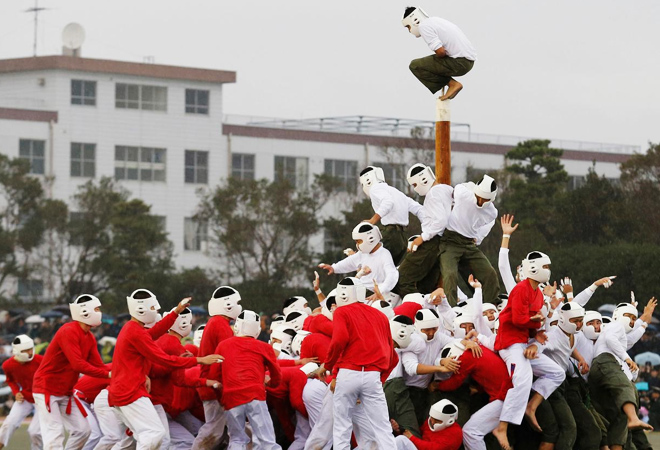
Bo-Taoshi
It’s a shame that modern Japanese culture’s reputation is so dominated by general weirdness and unsettling cartoons, because the small nation has some truly badass traditions, Bo-Taoshi being just one of them. When it comes to rules, Bo-Taoshi is surprisingly simple. For one team, it’s defend a pole for two minutes. For the other, attack it and bend it to a 45 degree angle. Where the complications come in is in practice. Both teams attack and defend at the same time and contain 150 players, meaning there’s 300 guys beating each other to a pulp for two minutes. For protection, all you get is a padded helmet. Otherwise, it’s you and your clothed body smashing one human wall against the other.
There’s no exact date for the first ever game of Bo-Taoshi, but it’s thought to have started sometime in 1945 with Japanese military cadets. That’s plausible enough for us, as the initial chanting and cries of the attacking charge sound a lot like the Japanese soldiers of World War Two. Plus, we imagine the game would be an excellent way to teach soldiers to work together in large groups, as well as withstand serious physical punishment. Not that we’re hoping the Army military starts using Bo-Taoshi at West Point. Just that it’s easy to see there might be some benefits here.
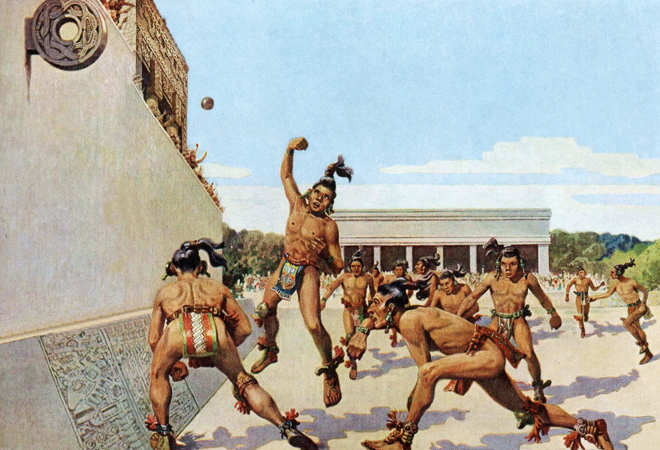
Mesoamerican Ball Game
The Olmecs were the first people to record playing the Mesoamerican Ball Game and by all indications for them, it was a fairly ordinary game. It was similar to volleyball, but with a solid rubber ball and where you used your whole body and wore thick padding and a helmet. It wasn’t until the Mayans got their hands on it that it got weirdly hardcore. Presumably, they played it the same, but definitely amplified the mythos. Mostly, the first game was between humans and the lords of the underworld. Under the Mayans, the game could be used to settle territorial and hereditary disputes, stood in for traditional warfare, and could even predict the future. The Mayans would also frequently sacrifice the losing team, who were usually prisoners of war.
The Aztecs kept up the more gruesome aspects of the game, even adding where they thought it needed it. Carvings have been found that depict the game being played with the heads of the previous game’s losers and Spanish observers reported horrific injuries and deaths from unprotected contact with the ball.
If you want a taste of the game, modern Mexicans tamed it and renamed it Ulama. If you find yourself in Mexico and want to experience ancient sporting events, it’s worth looking up or asking around.
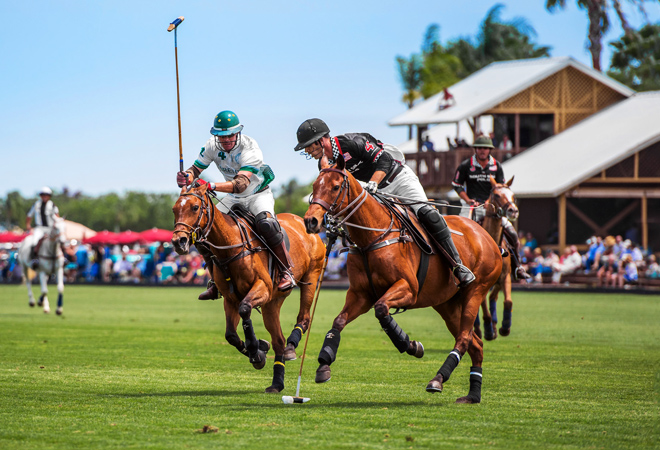
Polo
Polo, along with cricket, has to be the most pretentious, upper class sport we’ve ever seen, so to find out polo started as a way to train mounted fighting units is like finding out Marine Recon units invented knitting to train fine motor skills. Although it does start to get more believable once you learn about the numbers involved in those ancient Persian matches. Where today’s polo matches put four fancy Englishmen on each team, Persian matches could have upwards of two hundred mounted units galloping around swinging mallets. There was potentially 700 years of this hardcore version of polo maintaining its military edge undulled, as polo’s on Persian records between the 7th century BC and 1st century AD.
Eventually the game spread out in both directions, reaching China and Japan on one side and England on the other. For the English, it quickly became the high falutin pastime we know today. But it was in China faster and Emperor A-pao-chi took it a little more seriously. When a relative he was particularly fond of died in a match, he beheaded the surviving players. And apparently whoever recorded that incident didn’t feel the need to distinguish between teams, which makes us think the emperor killed anyone and everyone involved in that unfortunate match.
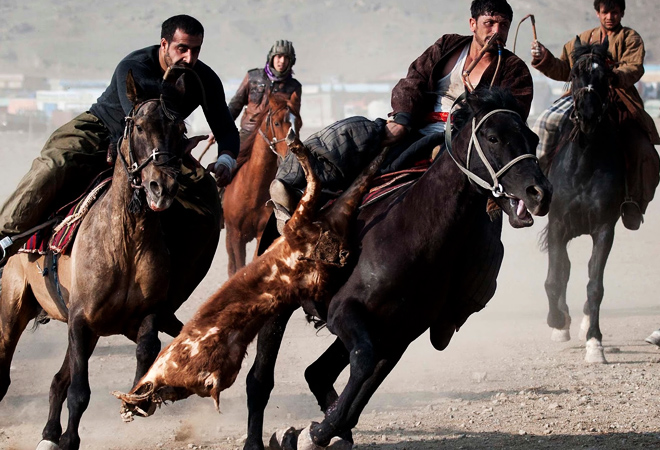
Buzkashi
You have to respect people who look at a sport like polo (in its early days) and decide there’s not enough blood. Then you have to respect them more when they solve the blood deficit with a headless corpse. Not human, granted, but a headless goat carcass shouldn’t be scoffed at. There’s a third level of respect due when you realize people have been playing buzkashi since Turkic tribes invented it as a way to train cavalry units (just like polo). It only took a few years for American football to thicken up its helmets and pads, yet Afghani athletes never once looked at their decapitated herd animal and thought to replace it with a stuffed counterpart.
We’re sure there’s some nuance to the game we’re not grasping here, but basically players have to carry the goat carcass from one end of the field to the other and back, then drop it in the scoring circle. Those are rules that even the most casual observer can understand. This is also the national sport of Afghanistan and personally, we hope it continues to be. It can be disheartening to watch countries lose parts of their national identity just because some people get uncomfortable, so here’s to another few centuries of Afghanis slinging dead goats like polo mallets.
If you want, here’s some great footage of the game. The video’s a little old, but we promise, the game hasn’t changed since the recording.
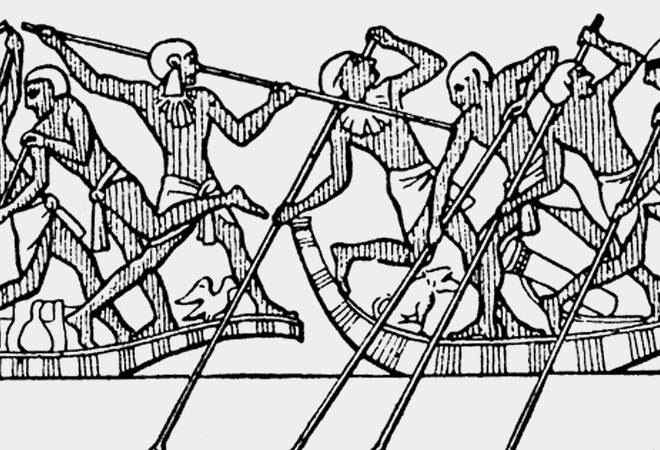
Egyptian Fisherman Joust
We haven’t had much cause to research Egyptian naval activities, so the Egyptian Fisherman Joust is really our first exposure to the ancient empire’s waterborne happenings and we’re alarmed to say the least. The only reason this qualifies as a sport is because archaeologists and historians haven’t found any examples of actual military forces using these techniques to solve problems. If they had, those problems would have stayed solved.
Basically, a bunch of guys stood up in a small boat, each one of them carrying a long pole. Some of them would use the poles to pilot the boat, while a few of them used their poles to hit the people in the other boat. And these weren’t playful jabs. Carvings regularly depict the matches as extremely violent and malicious, most, if not all of them, drawing blood. If the other crew successfully knocked you into the water, it probably didn’t matter if you could swim or not, as the blood in the water had already attracted crocodiles and hippopotamuses. Your chances of becoming a meal were high, so we’d love to know how popular this game actually was. Did they play it once and learn their lesson? Or was this a Roman Coliseum situation, where you just make slaves go out and get cut up and eaten?
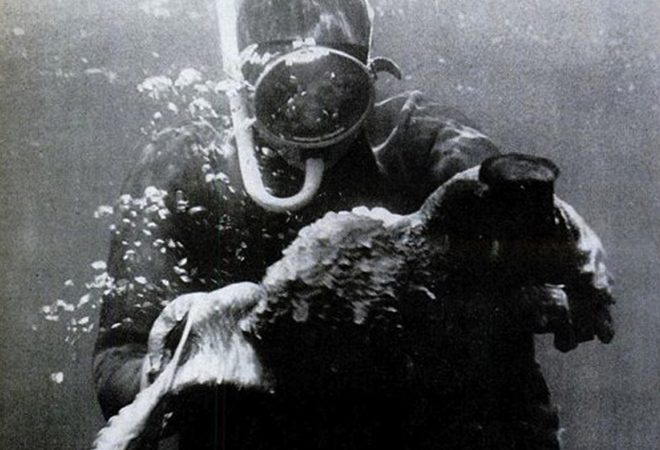
Octopus Wrestling
Surprisingly, the craziest part about octopus wrestling isn’t the activity. The sport itself is straightforward. Get in the water, find an octopus, and wrestle it to shore. We would be lucky if more sports had such simple objectives. What’s weird is that this sport was played by modern people in the Pacific Northwest. There are articles from the 1940s, ’50s, and ’60s, all detailing the lively cephalopod combat sport, with some events drawing crowds that numbered in the thousands. Granted this is also around the time when cramming people into phone booths was a huge event on college campuses, so maybe we shouldn’t be so surprised when we hear about people doing weird stuff in the postwar decades. Also, octopus wrestling is illegal now, so if you go diving into the Puget Sound looking for a fight, you’re better off having one with a human.

Viking Swimming Competitions
When Vikings decided to race each other in the water, they did it in their own special way. Basically, they turned Michael Phelps’s career into a contact sport. If Vikings were swimming competitively, assume they were hitting and shoving each other or dragging their opponent under the water in an attempt to slow them down. And sometimes all this was fully decked out in weapons and armor too, which means they’ve added a whole bunch of soaking wet cloth and leather, as well as pounds of metal to an already far too dangerous sport.
There are even reports, albeit hard to confirm, that sometimes Vikings would strike the swimming altogether. If they did, the competition was to try and hold your opponent under the water for longer than he held you. It’s either an insane sport or Norsemen trying to force each other to develop gills and from what we know of the Vikings, they weren’t super concerned with evolution.

Hee Holua
The most dangerous activity we’ve ever associated with Polynesian cultures is crossing oceans in wooden canoes. Not to downplay that, because that’s insanely dangerous in its own right, but it’s tame compared to the Hawaiian tradition of hee holua (sled riding). Hee holua is most closely related to bobsledding, only these Hawaiian sleds don’t speed down cushy tracks of soft snow, but enormous paths created by old lava flows or constructed out of lava rocks. Sledders routinely hit speeds in excess of 80 miles per hour coming down the stone paths, which is enough to shred faces, which is exactly what it’s done.
As far as we can tell, the longest paths that exist went from the top of Hawaii’s volcano down to the ocean. From that, we can only assume Hawaiians only invented enough of the holua to go fast. There aren’t any descriptions of brakes or mechanisms for slowing down, which might be why the paths go to the ocean. The Pacific is the only thing Hawaiians could think of that would stop them after skiing on lava.

